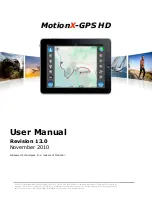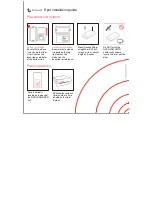Confidential Page
4
1/30/2013
GPS FUNDAMENTALS
There is a minimum of 24 operational GPS satellites at all times. The satellites,
operated by the U.S. Air Force, orbit the earth every 12 hours. Each GPS
satellite transmits data that indicates its location and the current time. All GPS
satellites synchronize operations so that these repeating signals are transmitted
at the same instant. The signals, moving at the speed of light, arrive at a GPS
receiver at slightly different times due to the varying distances of satellites.
The distance to the GPS satellites can be determined by calculating the amount
of time it takes for their signals to reach the receiver. When the receiver
determines the distance to at least four GPS satellites, it can triangulate and
calculate its position in three dimensions.
To ensure the GPS unit receives enough satellite signals at acceptable signal
strength, it must be mounted so that it has a clear view of the sky. In hidden
locations, such as under the dash, a clear view can be challenging. In these
locations, it is important to keep any metal interference as far away as possible
from the top portion of the GPS unit so that the most accurate position can be
calculated.
While GPS data collection has improved in ease and speed, some obstacles
remain. Solid or dense objects can block GPS signals. Wet trees with heavy
branches and leaves can mask or attenuate GPS signals. Mountains and
buildings can block satellite transmission. Multipath signals can corrupt GPS
data. Multipath is a reflected signal from nearby objects. The resulting
propagation delay can affect measurement accuracy. GPS electronics
advancements have reduced the multipath threat but GPS field operators and
users should be aware of obvious multipath environments.
CHECKING THE CONTENTS OF THE BOX
The contents of the box containing the NFT-4550 are shown below:
Model
Contents
NFT-4550 1.
NFT-4550
Unit
2. Cable Harness with Fuse
3. Relay


















